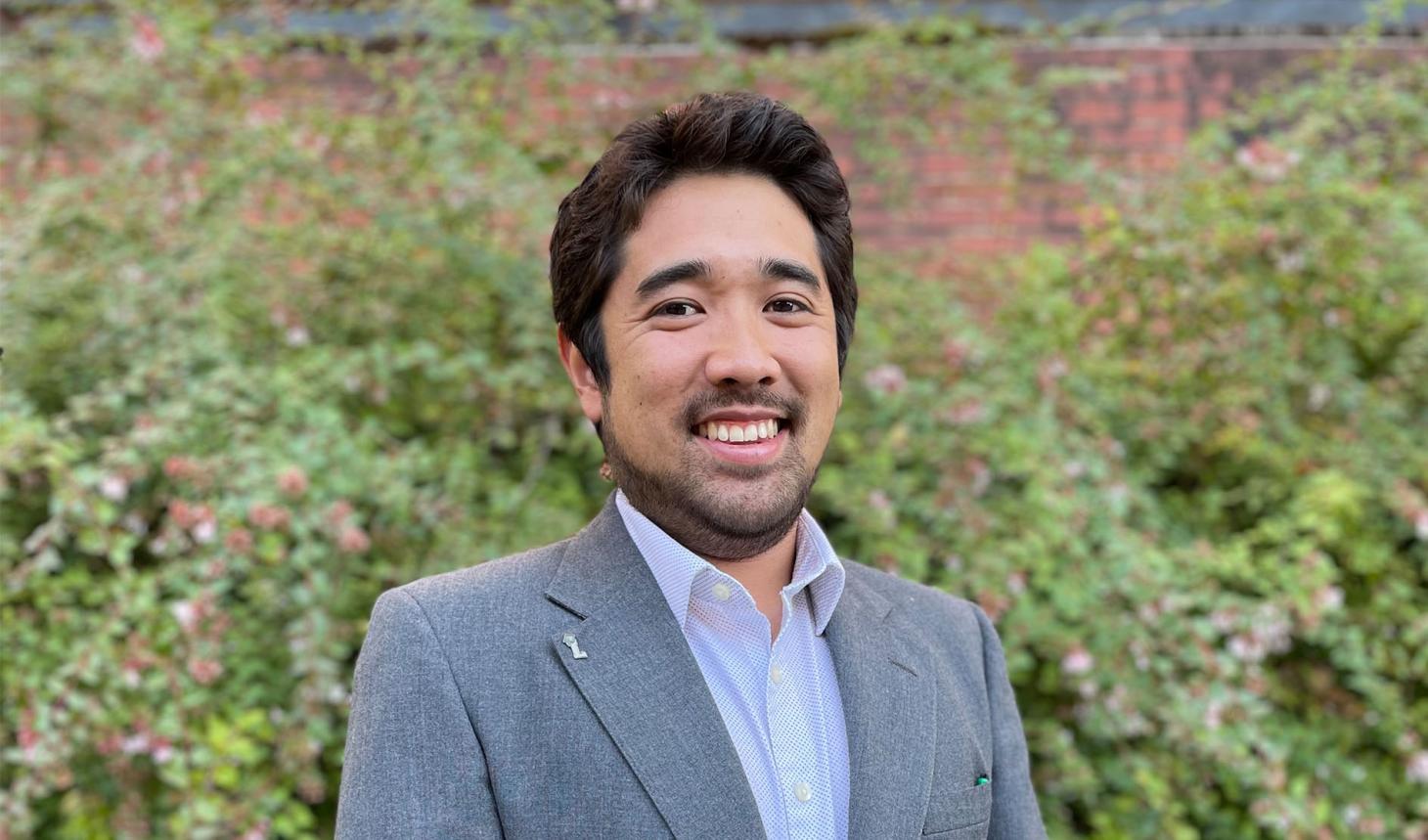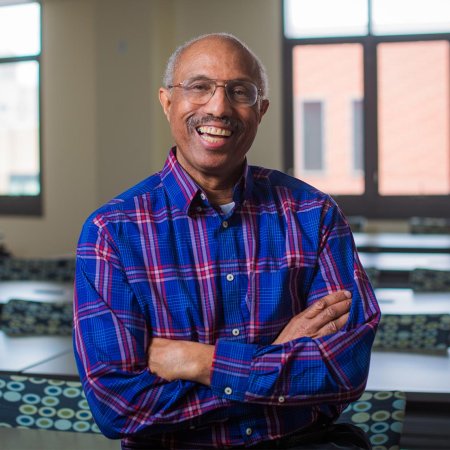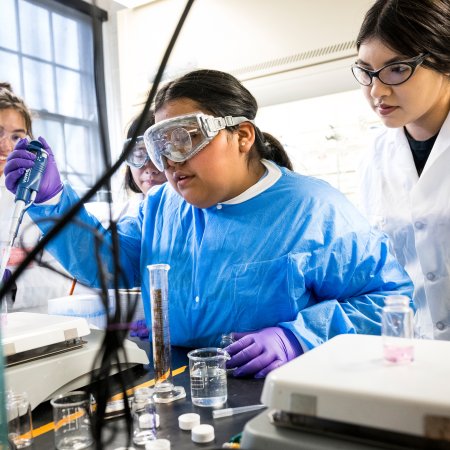Tracking progress toward greater inclusivity, enhancing our accountability
Dear College of Science community,
The College of Science has taken more critical steps toward changing its institutional culture to one that is equitable, welcoming and inclusive of students and faculty who have marginalized backgrounds, as well as those who have historically been excluded from higher education.
As I’ve shared previously, it can be challenging to effectively convey to the community our work on creating change. Though change happens slowly, we strive to be transparent in sharing about the progress we are making. It’s important for our community to see that we are moving forward and to understand how sincere we are about real change. To that end, we have built tools that enable us to report and share our progress.
We have created a reporting infrastructure – an implementation updates website – that can be leveraged across the College, including a reporting tool that enables updates on progress to be recorded at localized levels. As is all equity work, this is a work in progress and will be continually updated and refined.
The DAP is completely incorporated into the Strategic Plan, and so the reporting tool for both plans are united to Move Science Forward. Implementation of strategic goals will be continually documented in this Google spreadsheet. You can navigate between tabs to review the specific details of individual tactics, and use data filter views to review or sort data.
In addition to the details you can read there on how we are advancing systemic changes, I’d like to share a few highlights here:
We launched the new College of Science Gender Equity in Leadership Fund, open to any faculty-led programs that enhance and build leadership skills and opportunities for individuals who previously or currently identify as women. Read about this year’s three awardees in Impact.
We also established Launching Undergraduate Research Experiences, or LURE Science, which pays students as they gain invaluable research experiences alongside their studies. College of Science students who have not participated in research are invited to develop a project with a faculty mentor to deepen their learning and college journey. The program helps students who need to work, gain access to an opportunity they may not otherwise have time to engage in.
Steps were taken at the unit level, also. For example, to create a sense of belonging for their students, the chemistry department redesigned the Gilbert Hall entrance with alumni spotlights and a welcoming, helpful directory with posters of faculty placed throughout the building. They also created a welcoming study space called Triple Point for undergraduate and graduate students.
The integrative biology department has provided ample opportunities for learning and growth, including several reading and discussion groups focused on DEJI issues. They have hosted training and workshops for their faculty, including topics on sex and gender in the classroom and ways to decolonize research. The statistics department has also worked to bring learning opportunities to their faculty, including a workshop on Social Justice Education: “Critical and Inclusive Practices for Faculty.”
Our departments have also done significant work to support diverse communities locally, regionally and nationally. Biochemistry and biophysics faculty helped develop techniques and approaches for teaching biochemistry to the visually impaired. At the regional level, microbiologists developed and delivered the Pernot Microbiology Camp, focused on engaging historically underrepresented youths in microbiology. The physics department participated in the American Physical Society’s IDEA Network of equity-minded physics departments, providing support and contributing ideas to help advance EAI goals nationwide.
To effect change at a systemic, procedural and policy level, other units took important steps. For example, the mathematics department developed processes to make their national honorary mathematics society (Pi Mu Epsilon) more diverse and inclusive. And in the dean's office, we updated the College’s Search Rules to better ensure new hires embody our values of equity, access and inclusion.
This is only a sample of our work, but it speaks to the breadth and depth of our commitment college-wide. These implementation tools are a small but important step towards creating the College of Science of the future.
I encourage you to engage in not just our implementation tools, but in the important work of culture change. Thank you for all you are doing to make the vision of these plans for our community a reality. Every member of the College of Science is important to this process.
Sincerely,
Kameron Kadooka
Director of Equity, Access and Inclusion
Oregon State Universities Land Acknowledgement: Oregon State University in Corvallis is located within the traditional homelands of the Marys River or Ampinefu Band of Kalapuya. Following the Willamette Valley Treaty of 1855, Kalapuya people were forcibly removed to reservations in Western Oregon. Today, living descendants of these people are part of the Confederated Tribes of Grand Ronde Community of Oregon and the Confederated Tribes of the Siletz Indians. Indigenous people are valued, contributing members of the Oregon State community and represent multiple sovereign tribes among students, faculty, staff and alumni.
About the Director
Kameron Kadooka is the Director of Equity, Access and Inclusion (EAI) for the College of Science. Kameron is an OSU alum with a Bachelors of Science degree in Fisheries and Wildlife Science. He brings to this position nearly 9 years of experience as an OSU professional faculty member who has demonstrated a strong commitment to diversity and equity in his previous positions and successfully created partnerships and collaborations with colleges, departments, programs and external stakeholders.
Formerly, Kameron worked as the program coordinator for OSU’s Louis Stokes Alliance for Minority Participation program (LSAMP). LSAMP is a National Science Foundation program that works to support minority students in STEM, with specific goals to increase the recruitment, retention and graduation of underrepresented minority (URM) STEM students, many of whom are pursuing majors in the College of Science. In his six years as LSAMP coordinator, Kameron helped students navigate roadblocks and barriers. He is especially excited now to help launch the implementation of the College of Science Diversity Action Plan (DAP), because it has the potential to have much broader scalable, sustainable and systemic level impacts through removing many of the roadblocks and barriers and making the college more inclusive and equitable for all students and faculty.




